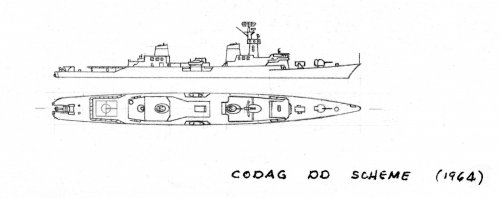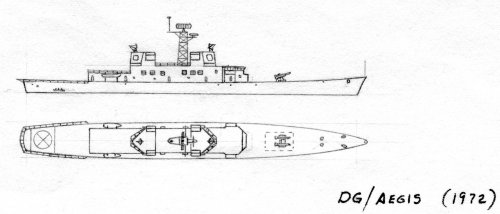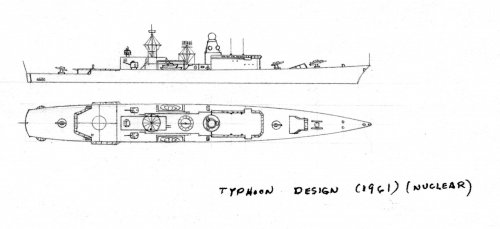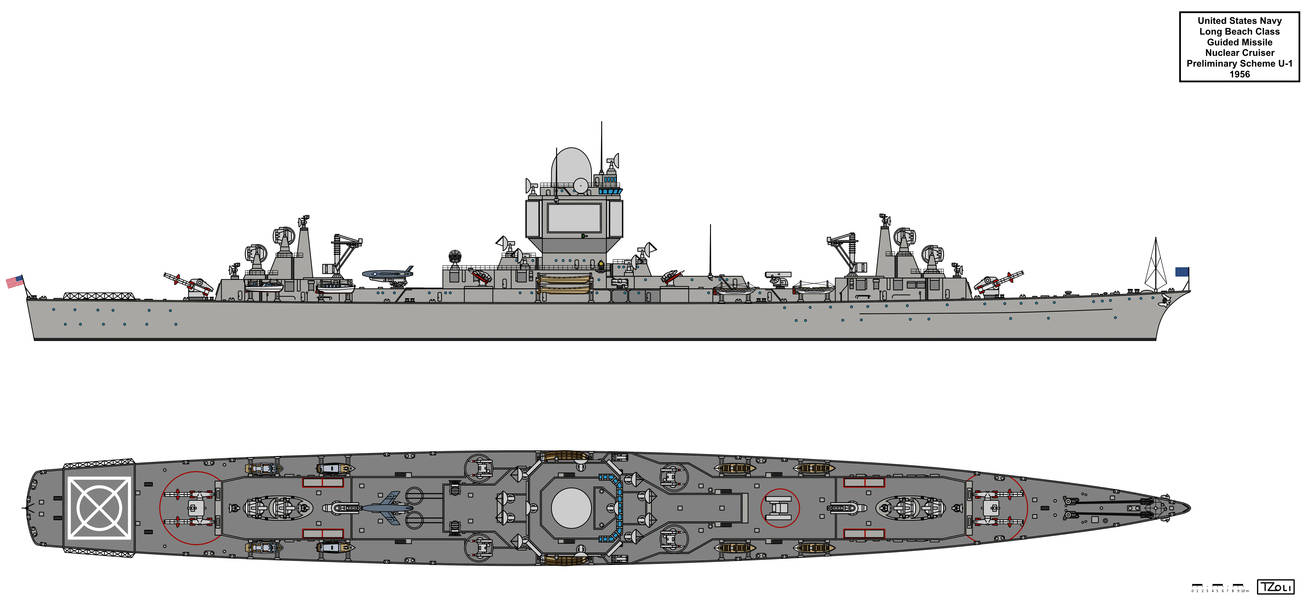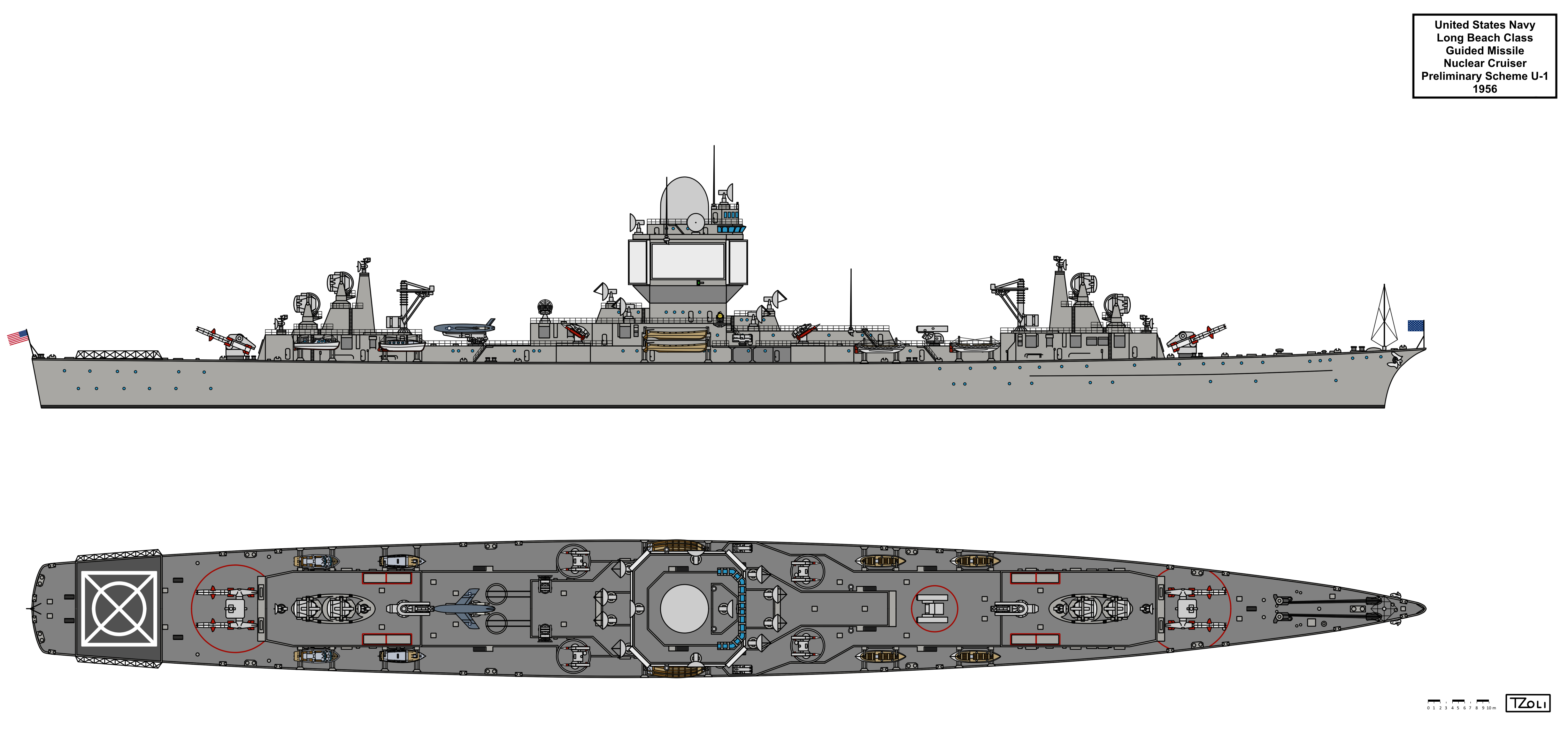I think something like a Steam or Gas Turbine driven version of this:
Tonnage wise it is pretty close with 18.280tons standard displacement

www.deviantart.com
Unlikely given that 6 years separate them, they're referred to as "destroyer designs" and this is a Long Beach preliminary.
The greater hull size is likely entirely driven by increased endurance, in terms of fuel, stores and self-maintenance. Given they are a simple cost and endurance comparison with nuclear powered ships, I doubt they have anymore in the way of combat systems, which are a major cost-driver so I expect that they have identical destroyer combat systems.
Given these were drawn up in 1964, they're not going to have the SCANFAR of designs from 1958-59, nor are they going to have Typhon (which was cancelled in 1963). The dates suggest that they are being compared to the late 1963 DDGN design or the near identical (in terms of armament) but slightly later
California-class DLGNs. The date of design also slightly postdates that of DDG FY66 (drawn up March 1963) and predates the design of DDG FY67/FY68 (the design process of which started in January 1965 and ended in June 1967).
In other words I think these designs are,
at best, double-ended Tartar ships, like the 1963 DDGN and
California, at worst they are single-ended Tartar ships like DDG FY66 and FY67.
Multiple powerplants were probably investigated, so along the likes of Project Seahawk, DDG FY66, DDG FY67 and Project DX/
Spruance, I wouldn't be surprised if a vast number of powerplant options were investigated, such as steam (with 600psi or 1200psi boilers, with and without pressure-firing), CODAD, COSAG, COGAG, COGAG-E (with electric motors), COSAG (again with all of the different types of boiler mentioned above) and possibly even COGAS (which was investigated for the
Spruance-class).

